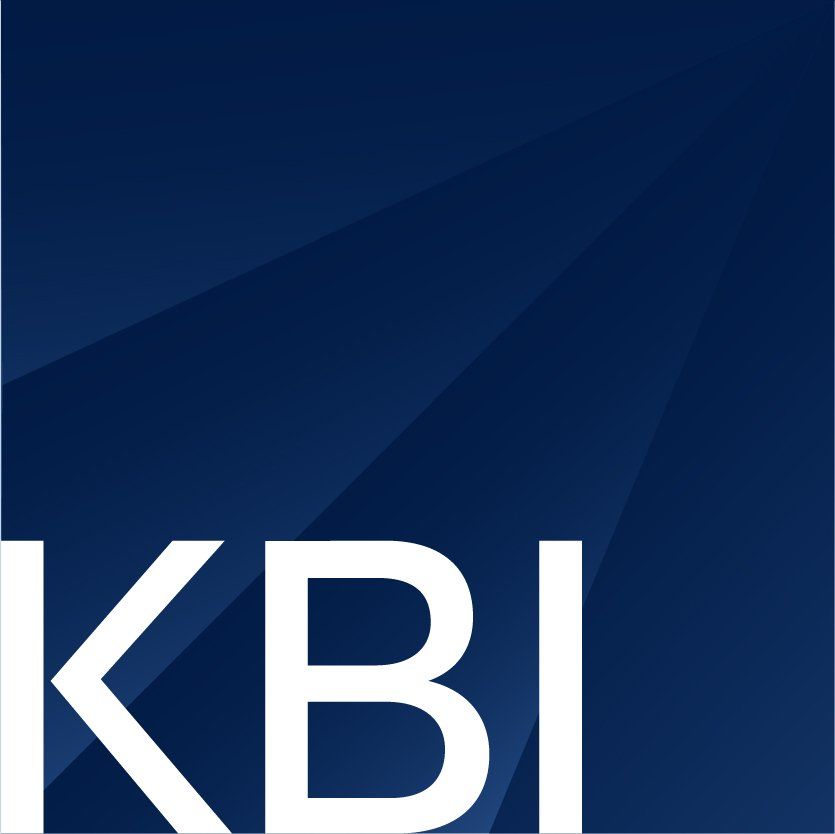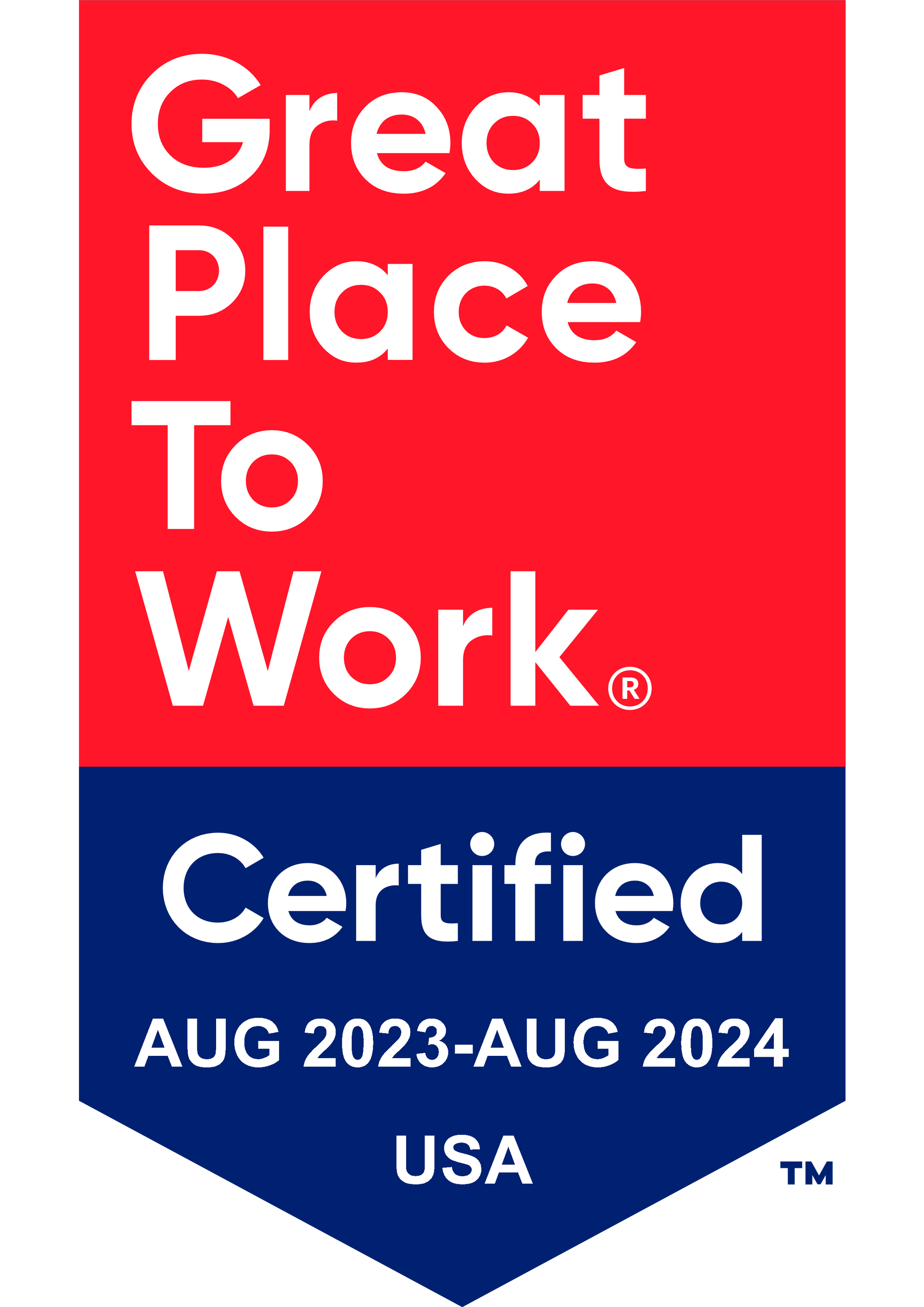Get in touch
408-366-8880
mymail@mailservice.com
Industry Insights

KBI'S Recent Posts

by Chris Freitas
•
8 April 2025
Offering a 401(k) plan is a major component of an employer’s benefits package, but simply providing one isn’t enough. To truly support employees’ long-term financial wellness and encourage meaningful participation, employers must understand how satisfied employees are with the plan — and more importantly, why. One of the most effective ways to do that is through an employee satisfaction survey. By tailoring your survey questions to reflect employees’ concerns, confusion, and priorities, you can gather actionable insights to refine your plan offerings and communication strategy. Here’s how to design thoughtful survey questions based on the most common concerns employees have about their 401(k) plans — and how to interpret their feedback. 1. Do Employees Know What They’re Enrolling In? Employee concern: What is a 401(k), and how does it work? Survey questions: How confident do you feel in your understanding of how the 401(k) plan works? Do you feel the company has provided adequate resources to help you understand the 401(k) plan? Why ask: If many employees report low understanding, it may signal the need for improved onboarding materials, workshops, or one-on-one sessions with financial advisors. 2. The Employer’s Role: Are Contributions and Match Clear? Employee concern: What is my company’s role in my 401(k), and how does the match work? Survey questions: How satisfied are you with the employer match offered in your 401(k) plan? Do you fully understand how the employer match is calculated and applied? Why ask: Confusion about matching contributions can lead to under-utilization of the benefit. If clarity is lacking, enhance your benefits communication or provide real-life match scenarios. 3. How Does the Plan Stack Up? Employee concern: Are all 401(k) plans the same? Survey questions: How would you rate the overall competitiveness of our 401(k) plan compared to your previous job’s offering or the offering of other jobs you’ve previously been offered? Which features of the plan are most valuable to you? (Select all that apply: generous match, low fees, automatic enrollment, immediate vesting, etc.) Why ask: This feedback helps identify which plan features resonate most with your workforce and where your benefits may fall short against competitors. 4. Is It Easy to Get Started? Employee concern: When can I start contributing? Survey questions: How satisfied were you with the timeline for enrolling in the 401(k) plan after joining the company? Was the enrollment process clear and easy to complete? Why ask: A lengthy or confusing enrollment process may deter participation. If dissatisfaction is high, it may be worth reviewing your onboarding or eligibility waiting periods. 5. Are Employees Saving Enough — and Do They Know It? Employee concern: How much should I contribute, and how often? Survey questions: How confident are you that you're contributing enough to meet your retirement goals? Would you find it helpful if we offered personalized guidance on how much to contribute? Why ask: Employees often feel unsure about their savings rate. Offering financial tools or advisory services could bridge this gap and boost satisfaction. 6. Are Employees Informed About Opportunities? Employee concern: What’s the maximum I can contribute? Survey questions: Are you aware of the annual IRS contribution limits for 401(k) plans? Would you like more communication around maximizing your contributions? Why ask: High-income or older employees may want to contribute more than the default. Ensuring they’re informed helps them plan more effectively. 7. Withdrawal Rules: Are Employees Aware of the Rules and Penalties? Employee concern: When can I access my money without penalties? Survey questions: Do you understand the rules around withdrawing money from your 401(k)? Would you benefit from educational materials or sessions about retirement withdrawal strategies? Why ask: A lack of awareness around withdrawal penalties and timelines can lead to poor decision-making or dissatisfaction. Education can help set clear expectations. 8. Plan Consolidation: Are Employees Managing Multiple Accounts? Employee concern: Can I have multiple 401(k) plans? Should I consolidate? Survey questions: Do you have retirement savings in more than one account (e.g., old 401(k)s or IRAs)? Would you be interested in services to help consolidate or manage multiple retirement accounts? Why ask: Many employees struggle with scattered savings. Supporting rollover or consolidation can improve their financial clarity — and your retention rates. Final Thoughts Designing a 401(k) survey that reflects real employee concerns allows HR and benefits teams to move from assumption to action. The questions above are crafted to uncover blind spots, highlight strengths, and identify specific areas for improvement — whether it’s boosting clarity, enhancing match policies, or simplifying plan features. Remember, the goal is not just to offer a 401(k) plan, but to make it a valued and effective part of your employees’ financial future. Ask the right questions, and you’ll get the answers you need to build a stronger, smarter retirement benefits offering.

by Chris Freitas
•
26 March 2025
When it comes to offering group disability or life insurance benefits to your employees, understanding the fine print is just as important as choosing the right coverage. One key detail that often flies under the radar is the “Actively at Work” clause. It might sound straightforward, but it has real implications for both employers and employees when it comes to coverage eligibility—especially when a disability claim is filed. What does “actively at work” mean? In the simplest terms, the clause means that an employee must be engaged in a full-time working position on the day a disability or life insurance claim is made. Now, that doesn’t always translate to the traditional 30- to 40-hour workweek. What matters is the nature of the job and whether it qualifies as full-time under your business’s policies. If the employee holds a full-time role and is actively fulfilling that role’s requirements, they’ll generally meet the “actively at work” standard. Importantly, this clause doesn’t penalize employees for taking standard time off. Paid vacations, holidays, or even brief personal leaves typically don’t count against coverage—as long as the employee is still formally in their full-time position. For example, if an employee files a disability claim while on vacation, their coverage should still stand, provided they were actively working right up to the time off. But here’s where things can get tricky. Insurance companies often use the “actively at work” clause to evaluate whether a claim is valid. Let’s say someone has left your company but is still somehow listed on your group insurance policy. If they submit a claim after their departure, the insurer can deny it under this clause, arguing that the person wasn’t actively working when the claim was made. Another scenario might involve a newly hired employee who never actually begins working due to a sudden illness. Even if their paperwork was processed and they were technically “on the books,” they may not qualify for coverage unless they physically began working in the role. On the other hand, if an employee does start working in a full-time role—even if it’s just for a few days—and becomes disabled shortly after, the clause is usually satisfied. That’s why it’s so important for HR teams and managers to understand this provision clearly and document work start dates accurately. Why Employers Should Share This Info with Employees Misunderstandings about the “actively at work” clause can lead to confusion and frustration—especially when someone is dealing with a new medical condition or crisis. As an employer, sharing clear, accessible resources with your staff helps set expectations and builds trust. A blog like this one can be a valuable reference tool for employees who want to better understand how their insurance coverage works, especially when facing a life-altering situation. Legal Guidance from KBI Benefits Navigating employee insurance policies isn’t always straightforward, especially when legal nuances like the “actively at work” clause come into play. That’s where the ERISA attorneys at KBI Benefits step in. We help businesses like yours understand the legal implications of providing insurance through employee benefits and ensure your policies are both compliant and clearly communicated. Need help interpreting your group insurance policy or setting up coverage for your team? Call KBI Benefits today to learn how we can support your business with experienced legal guidance tailored to your employee benefits program.

by Chris Freitas
•
18 March 2025
Choosing the right insurance for your construction project isn’t just another box to check—it’s a crucial decision that impacts risk management, compliance, and overall costs. Two of the most common types of construction coverage are Owner-Controlled Insurance Programs (OCIP) and Builder’s Risk Insurance. While they both offer essential protection, they serve different purposes. Understanding these differences can help you make the best choice for your project. What is Builder’s Risk Insurance? Builder’s Risk Insurance, sometimes called course of construction insurance, is a property insurance policy designed to protect buildings while they’re being built. It covers losses from physical damage at the construction site and related property. What Does It Cover? Damage from fire, lightning, hail, explosions, theft, vandalism, and natural disasters like hurricanes. The building or structure under construction. Materials, supplies, and equipment (whether on-site, in transit, or in storage). Soft costs like lost sales, rental income, extra loan interest, and real estate taxes if delays occur. Additional coverage for scaffolding, temporary structures, debris removal, and pollutant cleanup (if added). What’s Not Covered? Earthquakes, floods, high-wind zones, and beach areas (unless specifically added). Normal wear and tear, employee theft, terrorism, faulty design, or poor workmanship. Who Needs It? Property owners, general contractors, subcontractors, lenders, and architects. What Affects the Cost? The type of construction materials used. The size and complexity of the project. Coverage limits, which should generally match the total expected cost of the project. What is an OCIP? An Owner-Controlled Insurance Program (OCIP) is a comprehensive insurance policy purchased by the project owner. It covers the entire construction project, including liability and workers’ compensation. What’s Included? Commercial General Liability (CGL): Covers personal injury, property damage, and contractual liability. Workers’ Compensation: Medical and wage coverage for injured workers. Builder’s Risk Insurance: Protects the site from damage. Excess Liability (Umbrella Coverage): Extends coverage limits. Professional Liability (Errors & Omissions): Protects architects and engineers against design-related claims. Subcontractor Default Insurance: Covers losses if a subcontractor doesn’t fulfill their obligations. Completed Operations Coverage: Extends liability protection even after the project is finished. Optional Add-Ons: Pollution liability, earthquake and flood protection, and industry-specific coverage. What’s Not Covered? Commercial auto insurance (must be purchased separately). Surety bonds (contractors must buy these independently). Off-site contractors and vendors. Small subcontractors with minimal involvement. OCIP vs. Builder’s Risk: Key Differences Primary Purpose: Builder’s Risk covers property damage; OCIP covers liability, workers’ compensation, and subcontractor risks. Who Pays? Builder’s Risk is typically purchased by the owner, contractor, or lender. OCIP is bought by the project owner. Who’s Covered? Builder’s Risk covers property owners, contractors, subcontractors, lenders, and architects. OCIP covers the owner, general contractor, subcontractors, and other stakeholders. Coverage: Builder’s Risk covers damage from fire, theft, vandalism, and natural disasters. OCIP includes liability, workers’ compensation, and property damage. Exclusions: Builder’s Risk doesn’t cover faulty design, terrorism, or normal wear and tear. OCIP excludes commercial auto insurance, off-site contractors, and surety bonds. Cost Considerations: Builder’s Risk varies based on project size and materials. OCIP has a higher upfront cost but can offer long-term savings. Which Insurance is Right for Your Project? If your main concern is protecting the physical structure and materials, Builder’s Risk Insurance is the way to go. If you need a comprehensive policy that includes liability, workers’ compensation, and subcontractor coverage, OCIP is a better fit. Large projects (typically $50M–$100M+) benefit more from OCIP, while smaller or less complex projects are better suited for Builder’s Risk Insurance. Final Thoughts Choosing the right insurance policy is essential for protecting your project from financial risks and staying compliant with regulations. Whether you need Builder’s Risk Insurance or an OCIP, getting the right coverage ensures peace of mind. At KBI Benefits, we help businesses navigate the complexities of construction insurance. Our experts can guide you in selecting the best policy, managing risks, and ensuring compliance. Contact a KBI Benefits specialist today to make sure your project is fully protected.

by Chris Freitas
•
6 March 2025
When it comes to running a successful business, employee productivity and cost efficiency go hand in hand. After all, a happy, engaged workforce means better performance, while smart financial planning keeps everything running smoothly. But how do you improve employee benefits while keeping costs under control? That’s where KBI Benefits comes in. Let’s break down what to expect from your employee benefits broker to make the most out of your benefits budget. Enhancing Employee Productivity Through Better Benefits Happy employees are productive employees. When people feel valued and supported, they naturally perform better. KBI Benefits helps businesses improve employee well-being in several key ways: 1. Comprehensive Employee Wellness Programs A well-rounded benefits package goes beyond just healthcare. It should support every aspect of an employee’s well-being: Physical Wellness – Quality healthcare plans give employees access to preventive care, reducing sick days and boosting long-term health. When employees aren’t stressed about medical bills, they can focus on work. Mental & Emotional Wellness – Stress and burnout are major productivity killers. Offering mental health resources—like counseling services or employee assistance programs—creates a healthier, more engaged workforce. Financial Wellness – Money worries can be a huge distraction. Benefits like Health Savings Accounts (HSAs), Health Reimbursement Arrangements (HRAs), and retirement plans help employees feel financially secure. When they aren’t worried about making ends meet, they perform better. Social Wellness – Encouraging workplace connections, team-building activities, and even flexible work arrangements helps employees feel part of a community, leading to better collaboration and morale. 2. Professional Growth & Development No one likes feeling stuck in a dead-end job. That’s why providing learning and development opportunities is a game-changer. Offering training programs, mentorship, and career growth resources helps employees feel motivated, engaged, and more committed to their roles. And when employees are growing, the company grows too. 3. Recognizing & Rewarding Employees Appreciation goes a long way. Studies show that employees who feel valued are more productive. KBI Benefits helps businesses design recognition programs that ensure employees get the praise they deserve—whether it’s through bonuses, extra time off, or public acknowledgment. 4. Giving Employees the Right Tools Outdated technology and inefficient processes can slow employees down. By ensuring employees have access to modern tools and software , businesses can eliminate frustration and boost efficiency. Reducing Costs with Creative Financing Providing top-notch benefits doesn’t have to mean sky-high costs. KBI Benefits specializes in cost-saving strategies that allow companies to maximize employee support without overspending. 1. Smarter Health Plan Options Healthcare costs are one of the biggest expenses for businesses, but there are alternative options that help control spending while still offering quality benefits: Self-Funded Insurance Plans – Instead of paying fixed premiums to an insurance company, businesses can cover claims directly, which can significantly cut costs. Level-Funded Plans – A hybrid between traditional insurance and self-funded plans, this option gives businesses predictable expenses while potentially saving money. Captive & Consortium Health Plans – Small to mid-sized businesses can join together to manage healthcare costs , reducing risk and gaining greater negotiating power. 2. Reducing Administrative Costs with Digital Solutions Manually handling benefits enrollment and claims processing is time-consuming and costly. KBI Benefits leverages digital solutions to streamline these tasks, reducing administrative burdens and improving efficiency. 3. Benefits Benchmarking Are your benefits actually competitive? KBI Benefits offers a benchmarking tool to compare your current offerings against industry standards. This helps businesses make informed decisions about what to improve—whether it’s healthcare coverage, retirement plans, or paid time off (PTO). 4. Free Benefits Plan Audit Sometimes, businesses are paying for benefits they don’t need or missing out on better options. KBI Benefits provides a free benefits audit , helping companies pinpoint areas where they can save money without sacrificing employee satisfaction. The Bottom Line: Better Benefits, Smarter Spending KBI Benefits makes it possible for businesses to enhance employee well-being while reducing costs —a win-win for both employers and employees. By offering creative financing solutions, wellness programs, and benefits benchmarking , businesses can build a healthier, happier, and more productive workforce without straining their budget. Want to see how your company can optimize benefits while cutting costs? Schedule a free benefits audit with KBI Benefits today!

by Chris Freitas
•
24 February 2025
Small businesses have it tough when it comes to managing insurance costs. Traditional insurance policies can be pricey and inflexible, leaving little room to customize coverage or control premiums. But there’s another option that’s gaining traction: captive insurance . Once reserved for big corporations, this approach is now helping smaller companies get more bang for their buck. So, what’s captive insurance all about, and why should you care? Let’s break it down. What Is Captive Insurance? Think of captive insurance as DIY employee benefits. Instead of paying premiums to a commercial insurer, you and other businesses pool your resources to create your own insurance company, known as a captive . This lets you customize coverage, control premiums, and keep a closer eye on risk management. It’s like building an insurance plan that actually fits your workforce’s needs. Types of Captive Insurance There are a few ways to set up a captive, depending on how much control and risk you want to take on: 1. Pure Captives These are fully controlled by the members and come in two main types: Single Parent Captive: One company owns and controls the captive, covering only its own risks. Group Captive: Multiple companies in the same industry team up, sharing risks and rewards. This setup is great for smaller businesses looking to spread out the cost and risk. 2. Sponsored Captives With sponsored captives, outside investors provide capital, making it easier for smaller companies to get in the game without putting up all the money themselves. Captive Insurance vs. Traditional Insurance Here’s the big difference: Traditional Insurance: You pay premiums to an outside insurer who then assumes your risk. But these policies are often rigid, with strict exclusions that might leave gaps in your coverage. Captive Insurance: You invest your own resources into your captive, giving you more control over premiums, policies, and claims. Plus, you keep any unused premiums as profit. What’s in It for You? Key Benefits of Captive Insurance Custom Coverage: Tailor your policies to fit your unique needs, avoiding unnecessary extras. Control Over Decisions: In a group captive, you get a say in everything from premiums to claims processes. Invest Premiums: Unlike traditional insurance, you can invest your premiums, earning revenue even if no claims are made. Rewards for Safety: If your business maintains a low claims history, you get better payouts and can reinvest those savings back into your company. Is Captive Insurance Right for Your Business? You might think captive insurance is only for the big companies, but that’s not the case anymore. Thanks to group captives and sponsored captives, small businesses can also get in on the action. It’s a great option if you: Want more control over your insurance policies. Like the idea of investing premiums for potential returns. Prioritize safety and good risk management. Whether you run a small manufacturing company, a professional services firm, or a retail business, captive insurance offers a flexible, cost-effective way to protect your business. Captive insurance can be a game-changer, but there are a lot of factors that can determine if it works for your business. That’s where KBI Benefits comes in. Our brokers specialize in helping small businesses navigate this complex landscape, offering personalized advice to find the best solution for you. We offer a free audit of your current employee benefits plan to help you find cost savings and make sure you’re getting the most value from your existing benefits offerings. If captive insurance is the right fit, we’ll help you make a smooth transition. Want to learn more? Contact KBI Benefits today and see how captive insurance could work for your small business.

by Chris Freitas
•
18 February 2025
Employers looking to attract and retain top talent are considering different types of medical benefits to meet employee expectations. While major medical insurance remains the gold standard, some businesses are exploring limited health plans as a supplemental option. But are these plans right for your business? Understanding the role of limited health plans and how they fit into an employee benefits package can help you determine if they align with your company’s needs. What Are Limited Health Plans? Limited health plans are medical insurance policies that offer lower benefits and coverage restrictions compared to major medical insurance. These plans come with significantly lower premiums but do not provide the comprehensive coverage mandated under the Affordable Care Act (ACA). Types of limited health plans include: Fixed Indemnity Plans – Pays a set amount per medical service, regardless of the actual cost. Critical Illness Plans – Provides a lump-sum payment for serious diagnoses like heart attacks or strokes. Hospital Cash Plans – Pays a fixed amount per day of hospitalization. Accident-Only Plans – Covers medical costs associated with accidents. Accidental Death and Dismemberment (AD&D) – Pays out if an employee loses a limb, eyesight, or life due to an accident. Short-Term Health Plans – Temporary coverage for those in transition between major medical policies. Unlike traditional health insurance, these plans are designed to supplement coverage rather than replace major medical insurance. The Benefits of Offering Limited Health Plans While limited plans cannot serve as primary health insurance, they can offer advantages when included as part of an employee benefits package. 1. Helps Offset High Deductibles Many employees enroll in high-deductible health plans (HDHPs) due to their lower premiums, but these plans require employees to pay substantial out-of-pocket expenses before coverage kicks in. A limited plan, such as a fixed indemnity or critical illness policy, can help reduce these financial burdens. 2. Affordable Option for Employers and Employees Limited health plans are significantly cheaper than major medical insurance, making them a budget-friendly option for businesses looking to enhance their benefits package without a significant increase in costs. 3. Attracts and Retains Employees According to SHRM’s 2021 Annual Employee Benefit Survey, many employers have expanded their supplemental health insurance options. Offering additional coverage options, even in the form of limited health plans, can make your business more attractive to potential hires. 4. Useful for Employees in Transition Limited plans can be an ideal option for employees: Between jobs or recently laid off Aging out of parental insurance Missed ACA open enrollment Self-employed or working as freelancers Frequently traveling for work and needing out-of-network coverage Should Your Business Offer Limited Health Plans? Whether limited health plans are right for your business depends on several factors: Do your employees have high-deductible health plans? If so, offering a supplemental limited health plan can provide additional financial protection. Are employees looking for more affordable options? Limited plans can be an appealing choice for those who need lower-cost insurance alternatives. Do you want to enhance your benefits package without increasing costs significantly? Limited plans can provide added value to employees without the high expense of major medical insurance. Is employee retention a priority? Competitive benefits can help attract and retain talent in today’s workforce. Final Thoughts While limited health plans are not a replacement for major medical insurance, they can serve as a valuable supplement to existing coverage. If your business wants to provide additional financial protection for employees without significantly increasing costs, these plans might be worth considering. Before making a decision, consult with KBI Benefits to ensure you are offering the most optimized benefits for your workforce. This can mean the difference between a positive and negative ROI on your employee benefits. Contact a benefits expert today to explore the best options for your business.

by Chris Freitas
•
23 January 2025
For younger employees stepping into the workforce, navigating employee benefits can feel like deciphering a foreign language. This lack of understanding often results in missed opportunities to maximize benefits and unnecessary expenses for both employees and employers. The solution? Comprehensive education. By helping younger employees understand their benefits early and effectively, employers can empower them to make informed decisions, leading to improved satisfaction, cost savings, and overall well-being. Here’s how employers can take actionable steps to educate their younger workforce on employee benefits. 1. Start with the Basics Young employees, particularly those new to the workforce, often lack foundational knowledge about insurance and benefits. Start with a "Benefits 101" approach, covering essential topics such as common insurance terminology, how group health coverage works, and the importance of enrollment deadlines. Breaking down these concepts into digestible pieces will give employees the confidence to engage with their benefits plans. Providing user-friendly resources like glossaries of key terms, FAQs, and introductory guides can make this foundational education accessible and engaging. 2. Highlight the Value Younger employees are more likely to engage with benefits education when they see personal value. Explain how understanding their benefits can lead to smarter healthcare decisions, financial savings, and even long-term investment opportunities. For instance, show how researching provider networks can significantly reduce out-of-pocket costs or how contributing to a 401(k) early can yield substantial retirement savings. Focusing on tangible benefits helps employees connect the dots between learning about benefits and improving their overall quality of life. 3. Use Varied, Engaging Formats Gone are the days when lengthy handouts and dense white papers were the only options for benefits education. Younger employees respond better to diverse and interactive formats. Consider using: Videos to explain complex topics in a simple, visual manner. Infographics to break down key points. Email series to provide regular, bite-sized education. Interactive webinars for live Q&A sessions. Posters and flyers for quick reminders in shared spaces. By diversifying your approach, you can keep employees engaged while reinforcing important messages. 4. Make It a Continuous Process Benefits education shouldn’t be limited to onboarding or open enrollment periods. Make it an ongoing effort throughout the year. Create a communication calendar to share relevant topics each month, such as how to use telemedicine, when to visit urgent care versus the ER, or how life events affect benefits. Regular education keeps benefits top of mind and helps employees feel supported as their needs evolve over time. 5. Encourage Questions and Provide Support Even with robust educational efforts, employees will still have questions. Ensure your HR team is equipped to answer these inquiries promptly. Designate a dedicated benefits specialist who can respond to emails, attend meetings, and offer personalized guidance. Additionally, consider scheduling one-on-one meetings before open enrollment. These private sessions provide a safe space for employees to ask questions they might hesitate to bring up in larger group settings. Why Benefits Education Matters Educating younger employees about their benefits isn't just about helping them understand health insurance jargon; it's about equipping them to make informed decisions that positively impact their lives and your organization. Employees who understand and value their benefits are more likely to utilize them effectively, reducing unnecessary costs and increasing overall satisfaction. Build a Better Benefits Plan with KBI Benefits At KBI Benefits, we understand the importance of a well-designed benefits plan paired with effective education. Our team can help you craft an attractive benefits package that meets your employees’ needs while providing the resources and support to ensure they know how to make the most of it. Investing in benefits education not only improves employee satisfaction but also boosts productivity and loyalty. Speak with a KBI Benefits agent today to take your team’s performance and well-being to the next level!

by Chris Freitas
•
9 January 2025
As 2025 begins, significant shifts in employee benefits are set to redefine how businesses support their workforce. From rising health care costs to evolving workplace expectations, staying informed is essential for maintaining competitiveness and compliance. Here’s a closer look at the key changes and trends businesses should prepare for in 2025. 1. Rising Health Care Costs Health care costs are expected to surge by 7-8% in 2025 , driven by several factors, including medical inflation, an aging population, and increased demand for specialized medications like GLP-1 drugs. These drugs, popular for weight loss and obesity management, have garnered significant employee interest but come with steep price. Chronic health conditions such as diabetes, heart disease, and mental health issues also continue to dominate spending. To address these challenges, businesses are exploring mitigation strategies such as cost-sharing, preventive care education, and leveraging prescription drug savings programs. Employers are also reevaluating their formularies and wellness initiatives to balance rising costs with the need to offer competitive health plans. Now more than ever, businesses must take proactive steps to manage costs without compromising the quality of care their employees receive. 2. Health Plan Transparency: Compliance and Employee Trust In 2025, businesses must adhere to stringent health plan transparency requirements. These include self-service price comparison tools that provide real-time cost estimates for covered services and machine-readable files that disclose detailed pricing information. Additionally, employers must ensure compliance with rules against surprise medical billing and submit annual reports on prescription drug spending. Failure to meet these requirements could expose businesses to legal and financial risks. Partnering with knowledgeable third-party administrators or benefits providers can help businesses navigate these complex regulations. Beyond compliance, investing in transparency builds employee trust by empowering them to make informed health care decisions. 3. Telemedicine The popularity of telemedicine remains strong post-pandemic, offering employees convenient and cost-effective access to care. However, changes in high-deductible health plans (HDHPs) compatible with health savings accounts (HSAs) may create new challenges. Unless further legislation is enacted, providing telemedicine benefits without deductibles could jeopardize HSA eligibility in 2025. Employers must carefully assess their telemedicine offerings to ensure compliance while continuing to meet employee needs. Enhancing cybersecurity measures is also critical as telemedicine platforms handle sensitive health data. By aligning telemedicine benefits with business goals and employee expectations, companies can improve accessibility and manage costs effectively. 4. Labor Market Trends: Retention and Recruitment in Focus Although the labor market is stabilizing, businesses still face challenges in attracting and retaining talent. Competitive compensation remains a top priority for job seekers, with younger generations placing a premium on pay transparency and robust benefits packages. Meanwhile, workforce demographics are shifting, with millennials and Gen Z dominating the labor pool. Employers are responding by offering personalized learning opportunities and leveraging technology to streamline workflows. Flexible work arrangements and hybrid models also remain crucial, though many organizations are beginning to redefine the role of the office to foster collaboration and innovation. Companies that adapt to these evolving expectations will be better positioned to build a loyal and productive workforce. Moving Forward with Confidence Navigating the complexities of employee benefits in 2025 requires both strategic planning and adaptability. Rising health care costs, transparency regulations, and evolving workforce needs demand innovative solutions that balance employee satisfaction with cost efficiency. By addressing these trends head-on, businesses can create a supportive and competitive workplace environment. At KBI Benefits, we’re here to help you lower your employee benefit costs while ensuring compliance and maintaining your competitive edge. From managing health care expenses to designing holistic wellness programs, our team offers personalized solutions tailored to your needs, where you could save as much as 40% on similar employee benefits. Reach out to us today to learn how we can support your business in 2025 and beyond.

by Chris Freitas
•
7 January 2025
Employee wellness programs are a vital tool for creating happier, healthier, and more productive workplaces. Contrary to popular belief, these initiatives don’t have to be costly to be effective. By focusing on the physical, emotional, and financial wellness of their employees, employers can give their employees the tools they need to be happy, healthy, and productive. Below, we’ll explore 15 practical tips to improve employee well-being across these three crucial dimensions. Physical Wellness Walking Meetings : Transform sedentary discussions into walking meetings. This simple shift promotes physical activity and stimulates creative thinking. Group Fitness Classes : Organize in-office or virtual classes like yoga, Zumba, or strength training. These sessions boost morale and provide a fun way to stay active together. Fitness Challenges : Encourage friendly competition by tracking steps, hosting fitness contests, or training for events like 5Ks. Offer small prizes to keep employees motivated. Healthy Snacks : Stock the office with nutritious options like fresh fruits, nuts, and granola bars. This supports healthier eating habits and sustains energy levels throughout the day. Employee Benefits Packages: Nothing demonstrates your commitment to your employees’ health than a comprehensive employee benefits package. Employee benefits historically have improved employee retention, reduced tardiness, and ultimately provided a positive ROI on the amount of additional productivity they inspire. Speak with a KBI Benefits agent to see what employee benefits package is best for your business. Emotional Wellness Flexible Work Hours : Provide employees with the option to adjust their schedules. Flexibility fosters work-life balance and reduces stress. Mental Health Resources : Subsidize subscriptions to meditation apps like Calm or Headspace. Alternatively, offer workshops or access to counseling services. Nap Rooms : Create quiet spaces where employees can relax or take short naps during the day. A well-rested team is a productive team. Keep it Fun : Organize non-work-related activities such as game nights, scavenger hunts, or outings to a comedy show. This is a great way to improve the bonds between your team while also alleviating tension and stress. Financial Wellness Bicycle Racks and Stipends : Encourage biking to work by providing secure parking and subsidies for public transportation. This reduces commuting costs and promotes sustainability. Financial Literacy Workshops : Invite experts to discuss budgeting, saving, and investing. Equip employees with tools to manage their personal finances confidently. Relaxed Dress Codes : Shift to a casual dress policy. Employees save money on professional wardrobes, and the relaxed atmosphere can boost morale. In-Office Library : Build a collection of financial books and resources. Employees can access valuable knowledge without incurring personal costs. Paid Parental Leave : Support new parents by offering paid time off to bond with their child. This alleviates financial strain and fosters loyalty. Why Low-Cost Employee Wellness Programs Work Effective employee wellness programs don’t have to strain your budget. These initiatives focus on enhancing the quality of life for your team while fostering a positive and productive work environment. By incorporating wellness into your organizational culture, you address critical needs without breaking the bank. At KBI Benefits, we understand the importance of balancing employee satisfaction with cost efficiency. Our tailored strategies save businesses up to 40% on their employee benefits while improving the quality of offerings. Let us help you make your employees and your bottom line happy at the same time. Ready to revamp your approach to wellness? Contact KBI Benefits today to learn how we can optimize your employee benefits and create a healthier, happier workplace.
Services
Latest Thinking

by Chris Freitas
•
8 April 2025
Offering a 401(k) plan is a major component of an employer’s benefits package, but simply providing one isn’t enough. To truly support employees’ long-term financial wellness and encourage meaningful participation, employers must understand how satisfied employees are with the plan — and more importantly, why. One of the most effective ways to do that is through an employee satisfaction survey. By tailoring your survey questions to reflect employees’ concerns, confusion, and priorities, you can gather actionable insights to refine your plan offerings and communication strategy. Here’s how to design thoughtful survey questions based on the most common concerns employees have about their 401(k) plans — and how to interpret their feedback. 1. Do Employees Know What They’re Enrolling In? Employee concern: What is a 401(k), and how does it work? Survey questions: How confident do you feel in your understanding of how the 401(k) plan works? Do you feel the company has provided adequate resources to help you understand the 401(k) plan? Why ask: If many employees report low understanding, it may signal the need for improved onboarding materials, workshops, or one-on-one sessions with financial advisors. 2. The Employer’s Role: Are Contributions and Match Clear? Employee concern: What is my company’s role in my 401(k), and how does the match work? Survey questions: How satisfied are you with the employer match offered in your 401(k) plan? Do you fully understand how the employer match is calculated and applied? Why ask: Confusion about matching contributions can lead to under-utilization of the benefit. If clarity is lacking, enhance your benefits communication or provide real-life match scenarios. 3. How Does the Plan Stack Up? Employee concern: Are all 401(k) plans the same? Survey questions: How would you rate the overall competitiveness of our 401(k) plan compared to your previous job’s offering or the offering of other jobs you’ve previously been offered? Which features of the plan are most valuable to you? (Select all that apply: generous match, low fees, automatic enrollment, immediate vesting, etc.) Why ask: This feedback helps identify which plan features resonate most with your workforce and where your benefits may fall short against competitors. 4. Is It Easy to Get Started? Employee concern: When can I start contributing? Survey questions: How satisfied were you with the timeline for enrolling in the 401(k) plan after joining the company? Was the enrollment process clear and easy to complete? Why ask: A lengthy or confusing enrollment process may deter participation. If dissatisfaction is high, it may be worth reviewing your onboarding or eligibility waiting periods. 5. Are Employees Saving Enough — and Do They Know It? Employee concern: How much should I contribute, and how often? Survey questions: How confident are you that you're contributing enough to meet your retirement goals? Would you find it helpful if we offered personalized guidance on how much to contribute? Why ask: Employees often feel unsure about their savings rate. Offering financial tools or advisory services could bridge this gap and boost satisfaction. 6. Are Employees Informed About Opportunities? Employee concern: What’s the maximum I can contribute? Survey questions: Are you aware of the annual IRS contribution limits for 401(k) plans? Would you like more communication around maximizing your contributions? Why ask: High-income or older employees may want to contribute more than the default. Ensuring they’re informed helps them plan more effectively. 7. Withdrawal Rules: Are Employees Aware of the Rules and Penalties? Employee concern: When can I access my money without penalties? Survey questions: Do you understand the rules around withdrawing money from your 401(k)? Would you benefit from educational materials or sessions about retirement withdrawal strategies? Why ask: A lack of awareness around withdrawal penalties and timelines can lead to poor decision-making or dissatisfaction. Education can help set clear expectations. 8. Plan Consolidation: Are Employees Managing Multiple Accounts? Employee concern: Can I have multiple 401(k) plans? Should I consolidate? Survey questions: Do you have retirement savings in more than one account (e.g., old 401(k)s or IRAs)? Would you be interested in services to help consolidate or manage multiple retirement accounts? Why ask: Many employees struggle with scattered savings. Supporting rollover or consolidation can improve their financial clarity — and your retention rates. Final Thoughts Designing a 401(k) survey that reflects real employee concerns allows HR and benefits teams to move from assumption to action. The questions above are crafted to uncover blind spots, highlight strengths, and identify specific areas for improvement — whether it’s boosting clarity, enhancing match policies, or simplifying plan features. Remember, the goal is not just to offer a 401(k) plan, but to make it a valued and effective part of your employees’ financial future. Ask the right questions, and you’ll get the answers you need to build a stronger, smarter retirement benefits offering.


